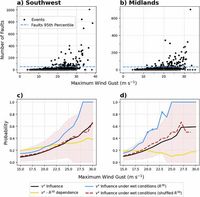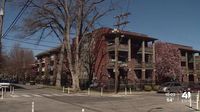Research conducted by the Met Office and Newcastle University has revealed that power outage predictions during windstorms can be significantly improved by accounting for multi-hazard effects. Windstorms are the leading cause of major power outages in the UK, primarily due to windthrow—the uprooting or breakage of trees by strong winds—which often leads to trees falling on overhead power lines.
Traditional risk assessments in the UK have primarily focused on wind speed, neglecting critical factors that influence windthrow, such as antecedent rainfall, wind direction, and seasonal elements like leaf cover. This oversight can result in a staggering underestimation of the likelihood of large power outages during windstorms, sometimes by as much as 2 to 5 times.
By analyzing power outage data from 2006 to 2018, researchers demonstrated the importance of these additional factors. For instance, the probability of outages was found to be 3 to 4 times higher in summer than in winter for the same wind speed. This increase is likely due to trees being more vulnerable to wind loading when they are covered with leaves. Additionally, the likelihood of outages was 2 to 3 times higher in wet conditions and when the wind direction deviated significantly from the prevailing south-westerly direction.
When all these conditions align, the probability of power outages can increase by 4 to 5 times, especially at lower wind speeds. Dr. Colin Manning, a research associate at Newcastle University and the report's author, emphasized the critical nature of this research, stating, "Windstorms have long been recognized as a threat to the UK's electricity distribution networks, which are vital components of the nation's critical infrastructure. Failures in these networks can cascade through other systems, affecting essential services."
Manning further noted that by considering multiple weather conditions, the accuracy of power outage predictions can be significantly enhanced, allowing for better preparedness for the impacts of extreme weather events.
The research also highlighted the importance of understanding regional variability in how these factors influence power outages. For example, tree trimming practices, tree species, and soil characteristics can vary from one region to another, underscoring the need for localized risk assessments. Furthermore, understanding how these additional factors might change in a future climate is essential for accurately projecting the likelihood of power outages.
Professor Lizzie Kendon, Strategic Head of Climate Processes and Projections at the Met Office, concluded, "This is the first UK study demonstrating the importance of additional factors affecting wind-driven power outages. Understanding how these factors will change, and including them in future risk assessments, is critical for accurately projecting the changing likelihood of power outages in the future. Changes in the seasonality of storms and increases in heavy rainfall with warming may act to compound the impact of strong windstorms in the future."
In response to these findings, the Met Office has emphasized that its weather warnings are impact-based, designed to communicate the potential consequences of weather events, such as damage to infrastructure or risks to public safety, rather than just the meteorological conditions. This approach ensures that the warnings are more actionable and relevant, leading to improved preparedness and response strategies.
Meanwhile, in Richmond, Virginia, Dominion Energy has made significant strides in reducing power outage times by burying more than 570 miles of power lines in the region. This initiative, part of Dominion's Strategic Underground Program, aims to address the primary cause of power outages: downed trees hitting power lines, a problem that has become more prevalent due to climate change and aging infrastructure.
Over the past decade, Dominion has worked to convert overhead power lines to underground ones in its most outage-prone areas. Currently, approximately 2,500 miles of Dominion's Virginia power lines have been converted to underground, representing about 13% of its total lines. This includes the 570 miles of converted lines in the Richmond region, with 379 miles specifically in Richmond, Chesterfield, Hanover, and Henrico.
New data from Dominion indicates that the buried lines have led to shorter outage times for all Richmond residents. Specifically, the average restoration time after a major storm, such as a hurricane or derecho, has been cut in half for all customers. This improvement is primarily because crews are not required to respond to the once-outage-prone areas as frequently.
In a stunning statistic, the average outage time for Dominion customers whose lines have been buried has dropped dramatically from 675 minutes (a little over 11 hours) to just 2 minutes. This remarkable reduction highlights the effectiveness of the undergrounding initiative.
Additionally, Dominion's Mainfeeder Hardening program, which upgrades old wooden poles and cross arms, has also contributed to reduced outage times. Customers who have received some of Dominion's new 8,000 poles and 9,500 cross arms experience an average of 30% less time without power compared to those with older poles.
Ultimately, Dominion's data confirms that buried power lines are beneficial in keeping all Richmond homes electrified, even those where the lines remain above ground. As both the Met Office and Dominion Energy continue to enhance their strategies for managing power outages, the future looks brighter for residents facing the challenges of extreme weather.



